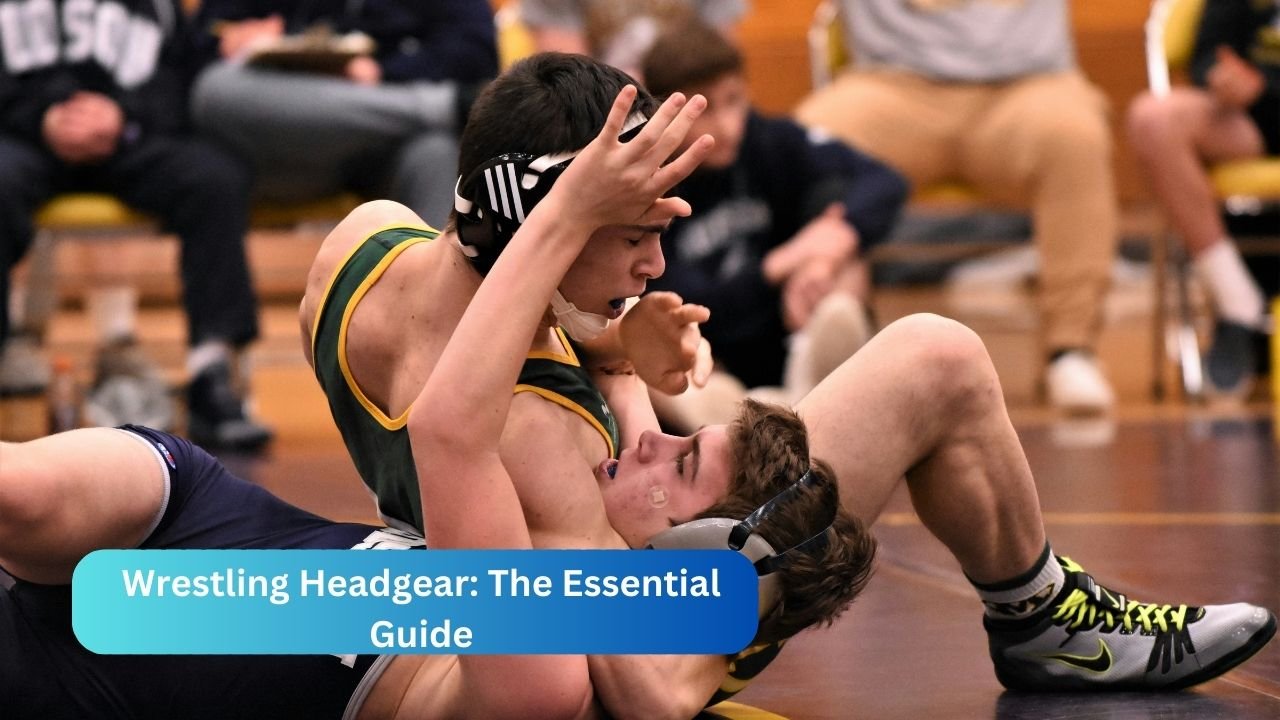Introduction to Wrestling Headgear
Wrestling is an intense, contact-heavy sport, and having the right gear is crucial for safety. One of the most important pieces of equipment in wrestling is headgear. But what exactly is wrestling headgear, and why is it so important?
Wrestling headgear, also known as ear guards, is a protective piece of equipment designed to protect the ears and head from injury. It is required in most wrestling competitions to ensure the safety of the athletes.
The History of Wrestling Headgear
Wrestling as a sport has a long history, and as it developed, so did the need for safety measures. Initially, wrestlers would suffer from severe ear injuries, leading to permanent deformities known as cauliflower ear. Over time, headgear was introduced to prevent these injuries, and it has since evolved into a vital piece of safety equipment.
In the early days, headgear was much simpler and less effective. However, modern designs are focused on comfort, protection, and durability, making wrestling safer for athletes at all levels.
Why Is Wrestling Headgear Important?
Protection Against Cauliflower Ear
One of the primary reasons wrestlers wear headgear is to prevent cauliflower ear. This condition occurs when the ear cartilage is damaged, causing blood clots and swelling, which eventually leads to permanent deformity if left untreated. Headgear helps protect the ears from the repeated trauma that causes this condition.
Prevention of Head Injuries
While wrestling headgear is primarily designed to protect the ears, it also provides some level of head protection. Although it doesn’t offer the same level of protection as helmets used in other contact sports, it helps reduce the risk of concussions and other head injuries.
Legal Requirements in Competitions
In many competitive wrestling environments, such as high school and collegiate-level matches, wearing headgear is mandatory. This ensures that all participants are equally protected from injury.
Cauliflower Ear Explained
What Is Cauliflower Ear?
Cauliflower ear is a condition that develops when the external part of the ear undergoes trauma or injury, causing blood to pool under the skin. If untreated, the ear hardens and deforms, resembling a cauliflower. It is common in wrestlers, mixed martial artists, and other contact sports athletes.
How Headgear Helps Prevent It
Wearing properly fitted headgear helps distribute the impact evenly across the head, preventing direct trauma to the ear. This reduces the likelihood of developing cauliflower ear, especially during intense wrestling matches.
Different Types of Wrestling Headgear
Wrestling headgear comes in different styles and materials. Understanding the differences can help you make the best choice for your needs.
Soft Shell vs. Hard Shell Headgear
- Soft Shell Headgear: Ideal for younger or beginner wrestlers, soft shell headgear offers flexibility and comfort. While it provides adequate protection for casual wrestling, it may not be as durable in high-impact situations.
- Hard Shell Headgear: Designed for competitive wrestlers, hard shell headgear offers more robust protection. It has a harder outer layer that can absorb impacts better, making it suitable for seasoned wrestlers.
Youth vs. Adult Headgear
Youth headgear is typically designed with smaller and more adjustable fittings, while adult headgear is designed for full-grown athletes and tends to be sturdier and more durable.
How to Choose the Right Wrestling Headgear
Choosing the right headgear is essential for comfort, protection, and performance on the mat.
Fit and Comfort
A snug fit is critical. Your headgear should not slide around during a match, but it also shouldn’t be so tight that it’s uncomfortable. Look for headgear that offers padding in key areas and has adjustable straps to customize the fit.
Durability and Protection
Consider the materials used in the headgear. High-quality materials will not only provide better protection but will also last longer. Balancing protection with mobility is key—your headgear should allow you to move freely without compromising safety.
Straps and Adjustability
The strap system is essential to keeping your headgear secure. Some headgear comes with a two-strap system, while others use a three- or four-strap configuration. Make sure the straps are easy to adjust and secure.
How to Maintain Wrestling Headgear
Proper maintenance can extend the life of your headgear and keep it in top condition.
Cleaning and Disinfecting
After each use, clean your headgear with a disinfectant wipe or mild soap and water to remove sweat and bacteria. This helps prevent the growth of mold or mildew, which can damage the material over time.
Storing Properly to Maintain Shape
Store your headgear in a cool, dry place. Avoid leaving it in a gym bag where it can get squished, as this can warp its shape and affect the fit.
Common Issues with Wrestling Headgear
Even with the best headgear, you may encounter some common problems.
Straps Breaking
Over time, the straps on headgear can wear out and break. To prevent this, make sure to inspect your gear regularly and replace any worn-out straps immediately.
Uncomfortable Fit
If your headgear feels too tight or causes discomfort, it may not be the right size or type for you. Opt for adjustable headgear to customize the fit.
Top Wrestling Headgear Brands
Several brands are known for producing high-quality wrestling headgear. These include:
- Cliff Keen: Known for its durability and comfort, Cliff Keen headgear is a favorite among wrestlers at all levels.
- Asics: A trusted name in sports gear, Asics offers a range of wrestling headgear that combines protection and style.
- Matman: Matman provides affordable, reliable headgear options for wrestlers of all ages.
Conclusion
Wrestling headgear is more than just a requirement—it’s a critical piece of safety equipment. By choosing the right headgear, maintaining it properly, and understanding its benefits, you can protect yourself from injuries like cauliflower ear and focus on excelling in your sport. Whether you’re a beginner or a seasoned competitor, investing in quality headgear is a smart move that will pay off in both performance and safety.
FAQs
Do all wrestlers need to wear headgear?
Yes, most wrestling organizations require athletes to wear headgear during matches to prevent injuries.
How do I know if my headgear fits correctly?
It should fit snugly without being too tight. You should be able to move your head freely without the headgear slipping.
Can I use wrestling headgear for other sports?
Wrestling headgear is designed specifically for wrestling, but it may be suitable for other sports with similar contact levels, like jiu-jitsu.
How often should I replace my wrestling headgear?
Replace it if the straps or padding show significant wear, or if it no longer fits properly.
Does wrestling headgear prevent concussions?
While it provides some protection, wrestling headgear is primarily designed to protect the ears, not prevent concussions.










